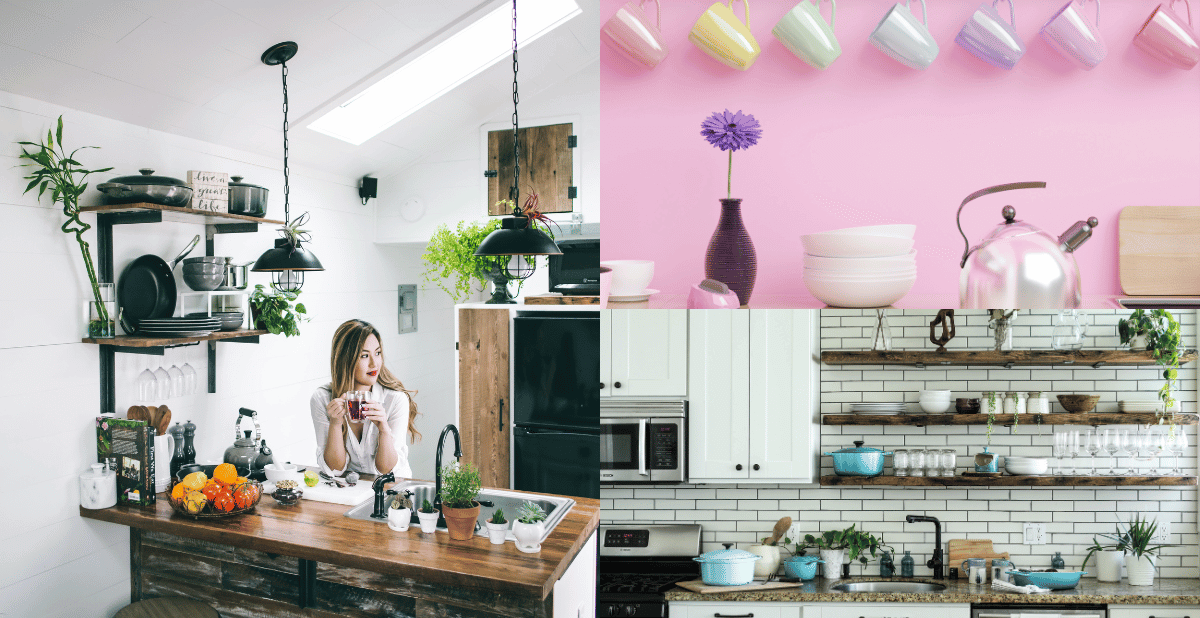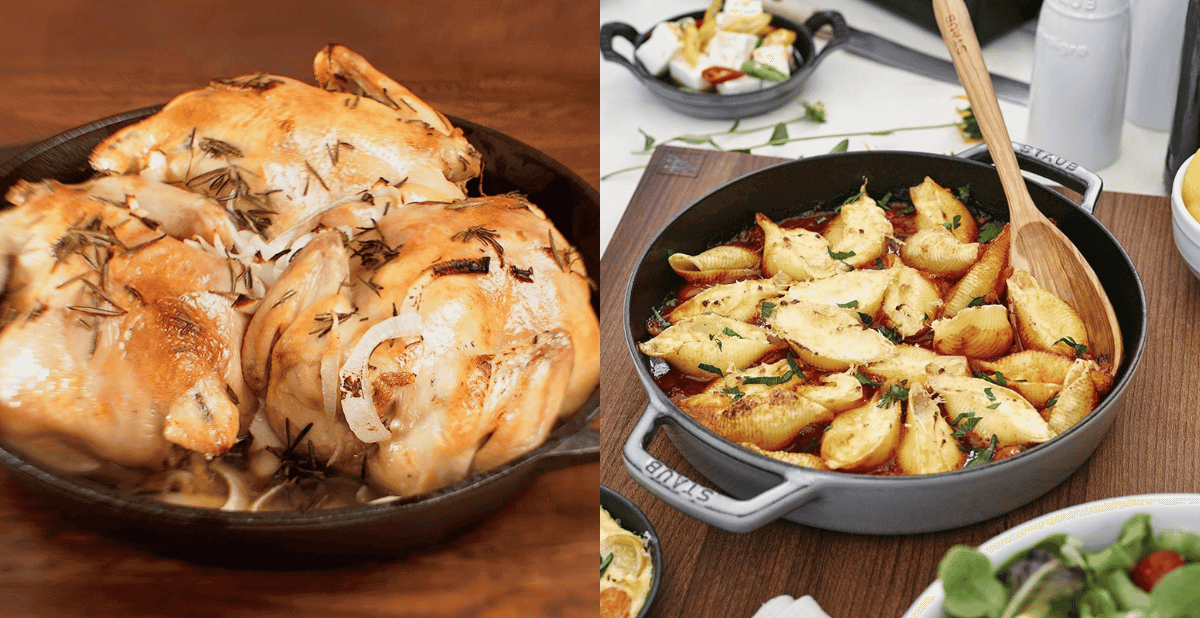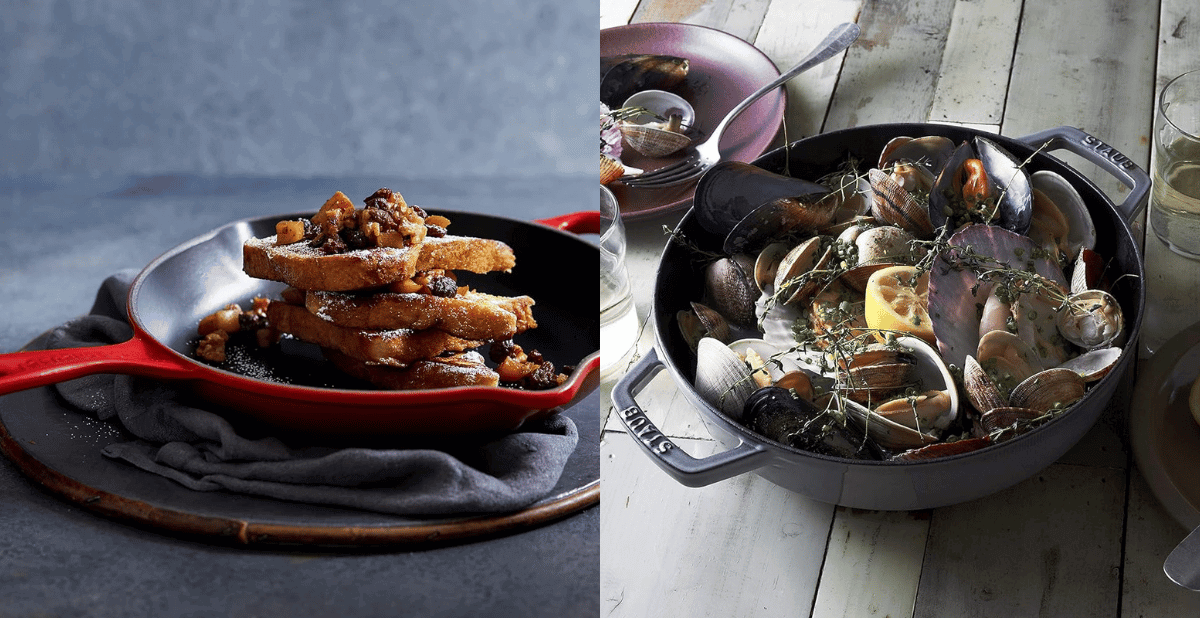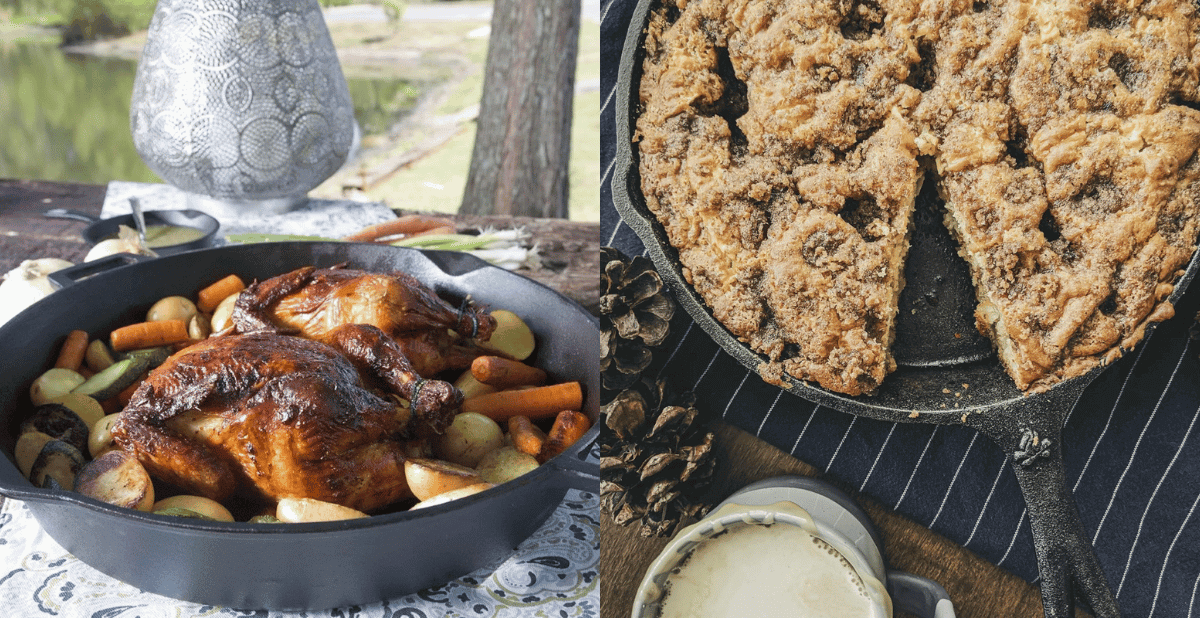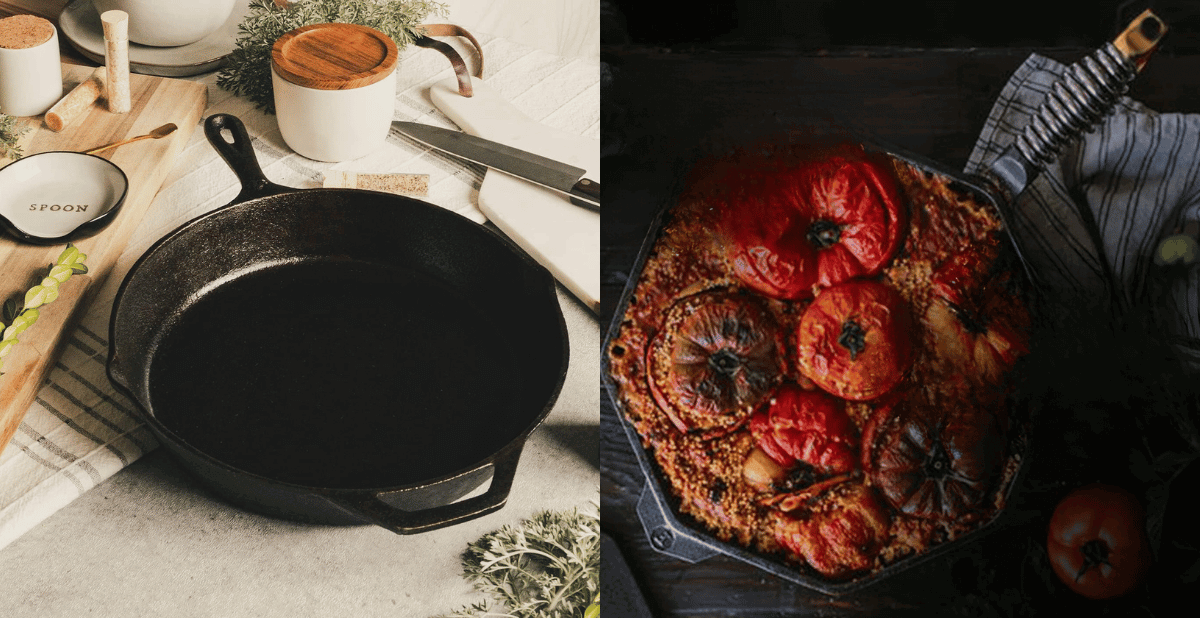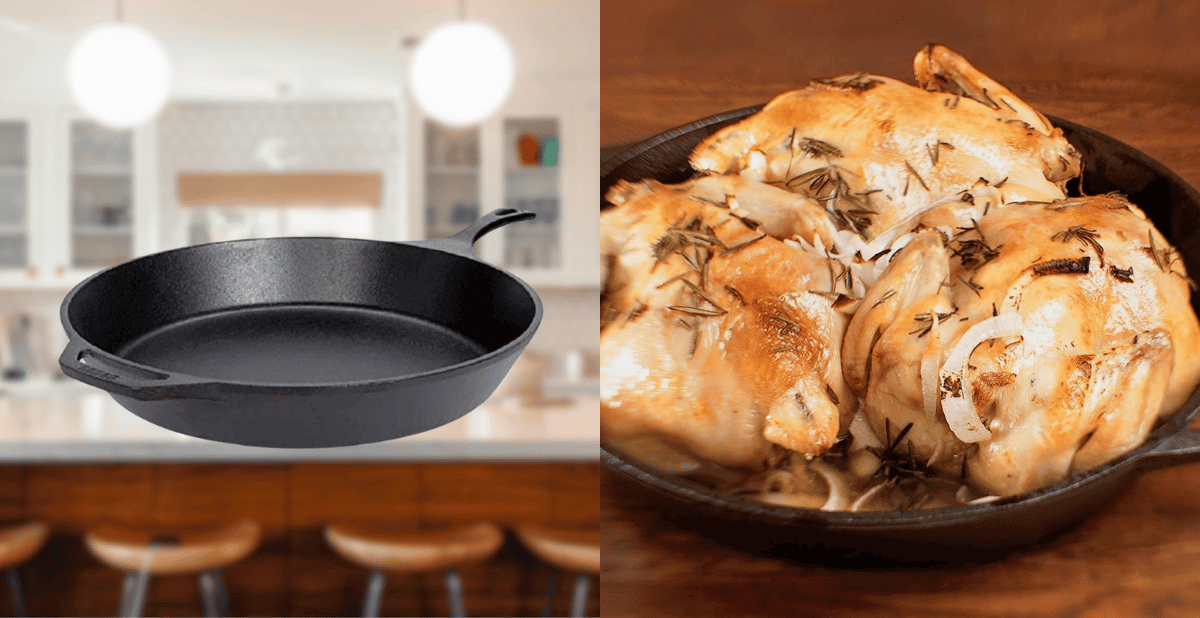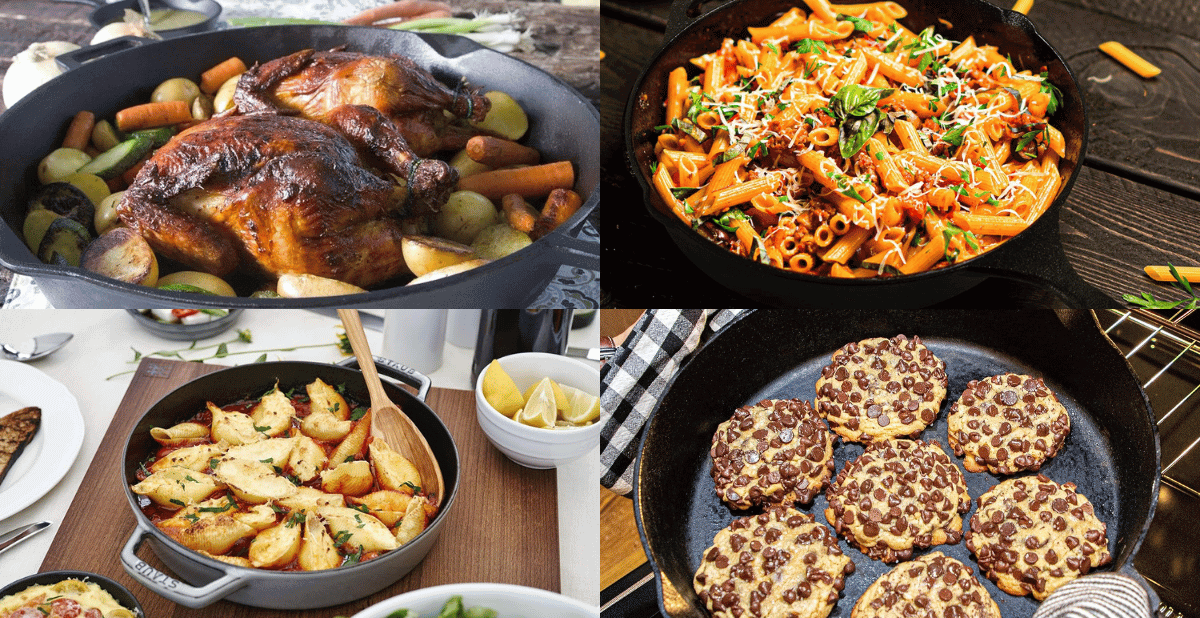Heat retention is a game-changer in cooking, and that's where a big cast iron skillet shines. Nothing sears in juices like a cast iron skillet! 💖
Key Takeaways:
- A big cast iron skillet offers superior heat retention and even cooking, making it ideal for a variety of dishes.
- The versatility of a large cast iron skillet allows it to be the only pan needed for searing, baking, and deep frying.
- Proper maintenance of a big cast iron skillet ensures a naturally nonstick surface and a lifetime of reliable performance.
The Unmatched Heat Retention of a Large Skillet
Heat retention is a game-changer in cooking, and that's where a big cast iron skillet shines.
The size cast iron skillet you choose directly impacts how well it retains heat.
Larger skillets, like a ten inch skillet or more, have more mass, allowing them to hold onto heat longer.
This means that once they're hot, they stay hot, which is crucial for searing steaks to perfection or getting that ideal crust on your fried eggs.
Even Cooking Across the Board
The allows heat to distribute evenly, ensuring that whether you're pan-frying of a big cast iron skillet is not just about size; it's about performance.
The larger surface area allows heat to distribute evenly, ensuring that whether you're pan-frying chicken thighs or baking cornbread, every inch gets evenly browned.
A big skillet's heat conduction also means that both the pan's bottom and sides contribute to cooking, making it perfect for dishes that require consistent temperature.
The Versatility of One Cast Iron Skillet
Imagine a kitchen where one cast iron skillet can do it all.
It allows heat to distribute evenly, ensuring that whether you're pan-frying a big cast iron skillet is not just about size; it's about performance. can do it all.
A big cast iron skillet is that versatile hero.
It's the only pan you need for a multitude of cooking methods, from stir-frying vegetables to deep-frying an eight-ounce steak.
The large size accommodates more food without overcrowding, which is often a limitation with smaller skillets.
A Naturally Nonstick Surface
Cast iron cookware, especially when well-seasoned, becomes naturally nonstick.
With a new cast iron skillet, you won't have to worry about your egg sticking to the pan.
Seasoning with canola oil and a paper towel creates a polymerized layer that protects the pan and ensures food releases easily from the cooking surface.
The Durability of Cast Iron
Most cast iron pans, particularly the best cast iron skillets, are known for longevity.
A big cast iron skillet is no exception.
With proper care, it can last for generations, outlasting lighter-weight and less durable pans.
This makes it a staple in both home kitchens and professional test kitchens.
Perfect for High Heat Cooking
The ability to withstand high heat is crucial for certain cooking techniques like searing steaks or creating grill marks.
A big cast iron skillet excels in this area.
Its high smoke point allows you to crank up the heat without damaging the pan, making it ideal for hot pan recipes.
Cast Iron Skillet Size Matters
When selecting a cast iron pan, size is not just a number—it's crucial in determining how you cook food and manage your kitchen space.
For example, a 12-inch cast iron skillet is popular for many home cooks.
It's large enough to sear steaks or bake a family-sized cornbread yet manageable in weight.
The size of the skillet you choose should reflect the dishes you love to make.
While smaller skillet options like eight-inch skillets are great for single servings, a larger pan can handle multiple ingredients at once, making it a versatile tool for all the pans you might need.
The debate about the size of a cast iron skillet often boils down to the type of cooking you're most fond of.
If you're into grilling, a grill pan with ridges might be your go-to.
These pans are designed to mimic the effects of outdoor grilling, perfect for those charred lines on your veggies and meats.
On the other hand, if you're looking to cook large meals or use your skillet as a baking dish, a 12-inch or even a 15-inch cast iron skillet would be more appropriate.
Remember, the larger the skillet, the better it will retain heat, but also consider the pan's weight when it's full of hot oil or food.
The Magic of a Dutch Oven in Cast Iron Cooking
Have you ever wondered why a Dutch oven is often the centerpiece of a well-equipped kitchen?
These heavy-duty pots are like the Swiss Army cookware knife, especially when made from cast iron.
A Dutch oven can do everything a cast iron skillet can, including some.
It retains heat, if not better, due to its thicker walls and tight-fitting lid.
This means your stews, braises, and bread are always perfectly cooked.
Moreover, the design of a Dutch oven makes it ideal for stovetop and oven use.
The ability to jump from sautéing to baking without changing pots is a convenience that can't be overstated.
And let's not forget the added benefit of the lid, which keeps moisture in and ensures your dishes stay succulent and flavorful.
Whether simmering a hearty chili or baking a crusty loaf of bread, a Dutch oven is unmatched in its versatility.
It is a worthy companion to all the skillets in your arsenal.
The Convenience of Pour Spouts and Handling
Pour spouts on a cast iron skillet are a game-changer when it comes to practical design features.
Imagine you've just finished searing a steak to perfection, and now it's time to drizzle that delicious pan sauce over your meal.
With pour spouts, you can serve up every last drop without any messy drips down the side of the pan.
These small details make a big difference in the kitchen, turning a simple skillet into an indispensable tool.
Handling a cast iron skillet can be a workout, given the pan's weight, but it's a testament to its durability and heat retention.
An eight-inch skillet might be manageable with one hand, but a helper handle is necessary when using a larger skillet.
This additional handle, often found opposite the main one, provides the leverage to lift and maneuver the skillet safely.
It's a thoughtful feature that ensures you can confidently handle the heft of cast iron, whether flipping pancakes or transferring the skillet to the oven.
The Innovation of Enameled Cookware
Enameled cookware has brought a colorful twist to the traditional cast iron skillet.
These pieces combine cast iron's excellent heat retention properties with a smooth, non-reactive surface ideal for cooking acidic foods.
Unlike regular cast iron, enameled cookware doesn't require seasoning, making it a low-maintenance option for convenience-lovers.
The enamel coating makes the surface easy to clean, so you can say goodbye to the struggle of scrubbing off stuck-on food.
But it's not just about ease of cleaning; enameled cookware also excels in the kitchen.
The even heat distribution of a cast iron base ensures that your meals are cooked uniformly.
At the same time, the enamel coating can withstand a variety of cooking methods, from stovetop to oven.
Dutch ovens, a type of enameled cookware, are particularly popular for their versatility.
Whether you're slow-cooking stews or baking bread, these pots can do it all.
And with a range of sizes available, from smaller pots perfect for sides to large ones for main courses, there's an enameled piece for every need.
Remember to monitor the temperature using an infrared thermometer or test kitchen techniques, as the enamel can be sensitive to sudden temperature changes.
Easy to Maintain and Season
Maintaining a big cast iron skillet is simpler than you might think.
After cooking, a quick wipe with a paper towel or a rinse with hot water is often enough.
To season, a light coat of oil is applied while the pan is warm, which keeps the surface naturally nonstick and protects against rust.
The Aesthetic Appeal of Cast Iron
There's something rustic and appealing about the look of a big cast iron skillet.
Whether it's an enameled cast iron skillet with a vibrant color or the classic black of a Lodge Skillet, these pans have a timeless beauty that stands out in any kitchen.
Ideal for Oven-to-Table Serving
Their heat retention makes cast iron skillets perfect for dishes from oven to table.
The pan stays hot, keeping food warm for serving.
Plus, the aesthetic of cast iron makes it a presentable option for any dining occasion.
The Health Benefits of Cooking with Cast Iron
Cooking with a large cast-iron skillet can contribute to your dietary iron intake.
As food cooks, a small amount of iron is transferred from the pan to the meal, providing a natural supplement especially beneficial for those with iron deficiencies.
The Cost-Effectiveness of a Big Skillet
When considering the cost of kitchenware, a big cast iron skillet is a smart investment.
Its durability and versatility mean it can replace several other pans in your collection, saving you money in the long run.
The Environmental Choice
Choosing a large cast iron skillet is not only good for your cooking, it's good for the environment.
Cast iron's longevity reduces the need for frequent pan replacements, reducing waste.
Also, cast iron is recyclable, making it a more sustainable option than many other types of cookware.
Until Next Time...
A big cast iron skillet is an unrivaled kitchen tool that excels in heat retention, versatility, and durability.
Its naturally nonstick surface, ability to handle high heat, and ease of maintenance make it the go-to choice for cooks of all levels.
Whether searing, baking, or frying, a large cast iron skillet ensures even cooking and delicious results every time.
Thanks for taking the time out of your busy day to read our blog!
Happy Searing,
MommaPuff


